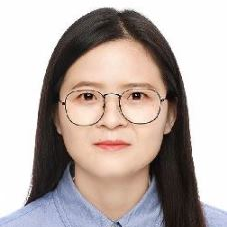Advances in the Application of Lidar
A special issue of Remote Sensing (ISSN 2072-4292). This special issue belongs to the section "Engineering Remote Sensing".
Deadline for manuscript submissions: 20 June 2024 | Viewed by 5848
Special Issue Editors
Interests: landscape mapping; object-based image analysis using LiDAR; machine learning algorithm
Special Issues, Collections and Topics in MDPI journals
Interests: land cover and land use change; land-atmosphere interactions
Special Issues, Collections and Topics in MDPI journals
Interests: vegetation mapping; SAR; LiDAR; satellite image processing
Special Issues, Collections and Topics in MDPI journals
Special Issue Information
Dear Colleagues,
LiDAR (light detection and ranging, also LIDAR, LiDAR, and LADAR) has advanced rapidly since 1960. It is an active remote sensing technology that measures the distance by taking the speed of light and the time elapsed to travel from the target object to the sensor. The most common information provided by LiDAR is elevation and the structural profile of the terrain surface. Applications of LiDAR include flood risk measurements, terrain modeling, tree height measurements, etc. There are also advanced approaches for data fusion using both LiDAR data and high spatial and high spectral resolution images for ground cover classification and target recognition. In the last few decades, remote sensing technology has evolved dramatically with the better quality of LiDAR products as well as a rapid development of machine and deep learning algorithms. These most advanced technologies lead the remote sensing community to further explore the advanced applications of LiDAR data.
This Special Issue aims at studies that provide insights into the most advanced LiDAR remote sensing and their applications at local, regional, or global scales. Topics may include anything from advances of the physical principles or data processing of LiDAR to LiDAR for agriculture and forest application, urban application, change detection, or geoscience applications, etc. In addition, multisource data fusion with LiDAR, classification algorithms development, accuracy assessment, etc., are all welcome.
Suggested themes and article types for submissions.
- LiDAR data fusion technologies and algorithm development.
- LiDAR application in forestry: e.g., individual tree mapping, canopy mapping, etc.
- LiDAR application in agriculture: e.g., crop planning, yield forecasting, etc.
- LiDAR urban application e.g., road extraction, building extraction, etc.
- LiDAR application in disaster management: e.g., post-flooding mapping, etc.
- LiDAR application for geoscience such as surface hydrology, fluvial landforms etc.
Dr. Fang Fang
Dr. Yaqian He
Dr. Qinghua Xie
Guest Editors
Manuscript Submission Information
Manuscripts should be submitted online at www.mdpi.com by registering and logging in to this website. Once you are registered, click here to go to the submission form. Manuscripts can be submitted until the deadline. All submissions that pass pre-check are peer-reviewed. Accepted papers will be published continuously in the journal (as soon as accepted) and will be listed together on the special issue website. Research articles, review articles as well as short communications are invited. For planned papers, a title and short abstract (about 100 words) can be sent to the Editorial Office for announcement on this website.
Submitted manuscripts should not have been published previously, nor be under consideration for publication elsewhere (except conference proceedings papers). All manuscripts are thoroughly refereed through a single-blind peer-review process. A guide for authors and other relevant information for submission of manuscripts is available on the Instructions for Authors page. Remote Sensing is an international peer-reviewed open access semimonthly journal published by MDPI.
Please visit the Instructions for Authors page before submitting a manuscript. The Article Processing Charge (APC) for publication in this open access journal is 2700 CHF (Swiss Francs). Submitted papers should be well formatted and use good English. Authors may use MDPI's English editing service prior to publication or during author revisions.
Keywords
- LiDAR remote sensing
- change detection
- remote sensing
- classification
- machine learning
- LiDAR in forestry
Planned Papers
The below list represents only planned manuscripts. Some of these manuscripts have not been received by the Editorial Office yet. Papers submitted to MDPI journals are subject to peer-review.
Dear Colleagues,
LiDAR (light detection and ranging, also LIDAR, LiDAR, and LADAR) has advanced rapidly since 1960. It is an active remote sensing technology that measures the distance by taking the speed of light and the time elapsed to travel from the target object to the sensor. The most common information provided by LiDAR is elevation and the structural profile of the terrain surface. Applications of LiDAR include flood risk measurements, terrain modeling, tree height measurements, etc. There are also advanced approaches for data fusion using both LiDAR data and high spatial and high spectral resolution images for ground cover classification and target recognition. In the last few decades, remote sensing technology has evolved dramatically with the better quality of LiDAR products as well as a rapid development of machine and deep learning algorithms. These most advanced technologies lead the remote sensing community to further explore the advanced applications of LiDAR data.
This Special Issue aims at studies that provide insights into the most advanced LiDAR remote sensing and their applications at local, regional, or global scales. Topics may include anything from advances of the physical principles or data processing of LiDAR to LiDAR for agriculture and forest application, urban application, change detection, or geoscience applications, etc. In addition, multisource data fusion with LiDAR, classification algorithms development, accuracy assessment, etc., are all welcome.
Suggested themes and article types for submissions.
- LiDAR data fusion technologies and algorithm development.
- LiDAR application in forestry: e.g., individual tree mapping, canopy mapping, etc.
- LiDAR application in agriculture: e.g., crop planning, yield forecasting, etc.
- LiDAR urban application e.g., road extraction, building extraction, etc.
- LiDAR application in disaster management: e.g., post-flooding mapping, etc.






